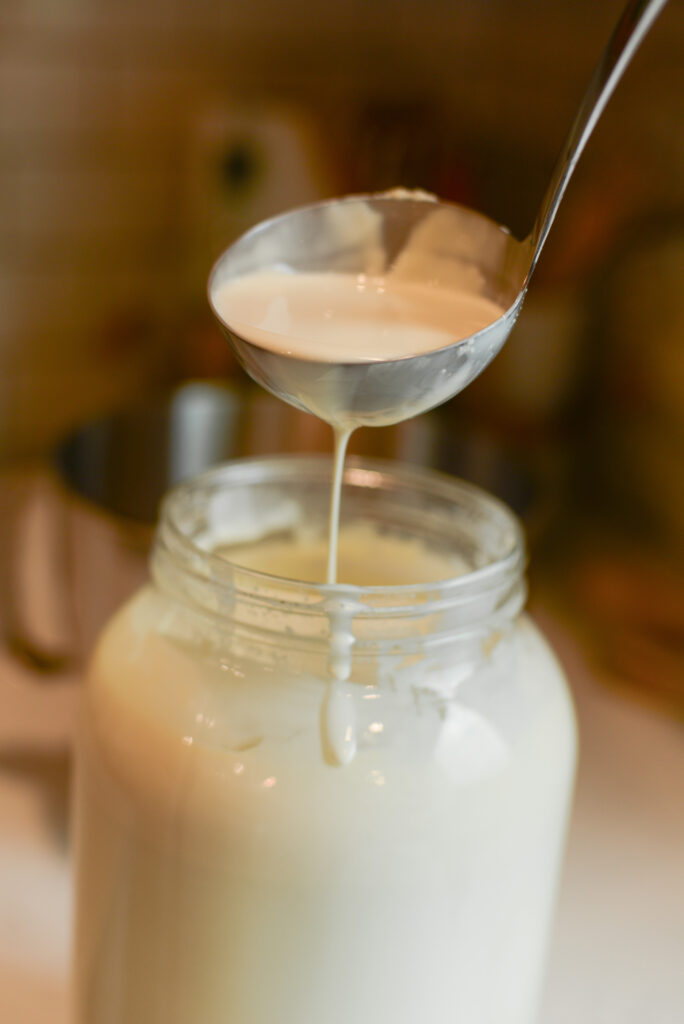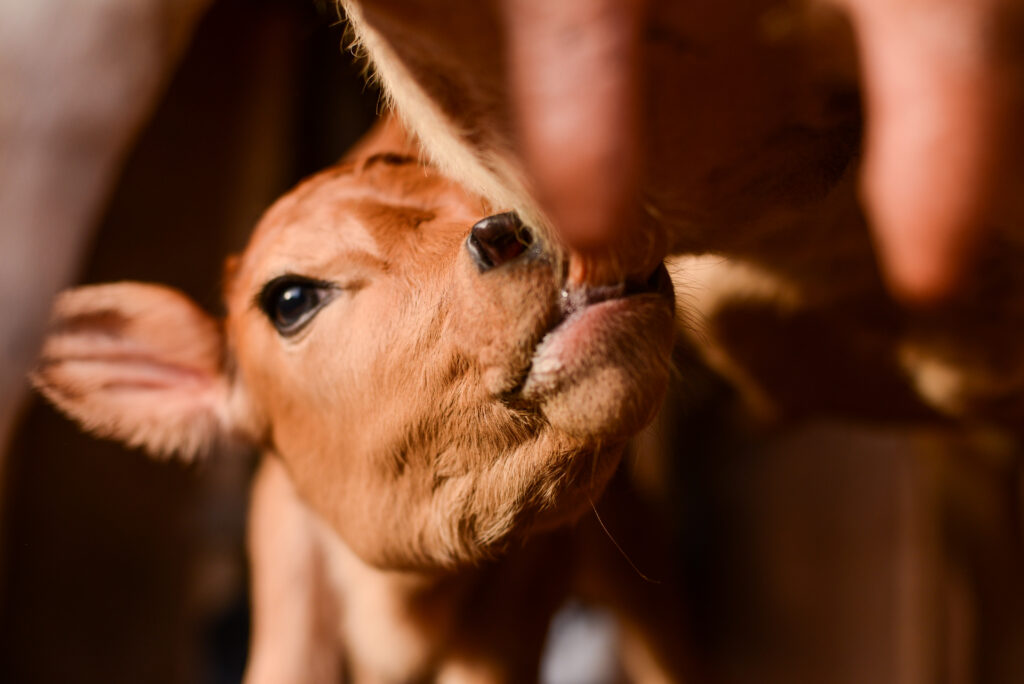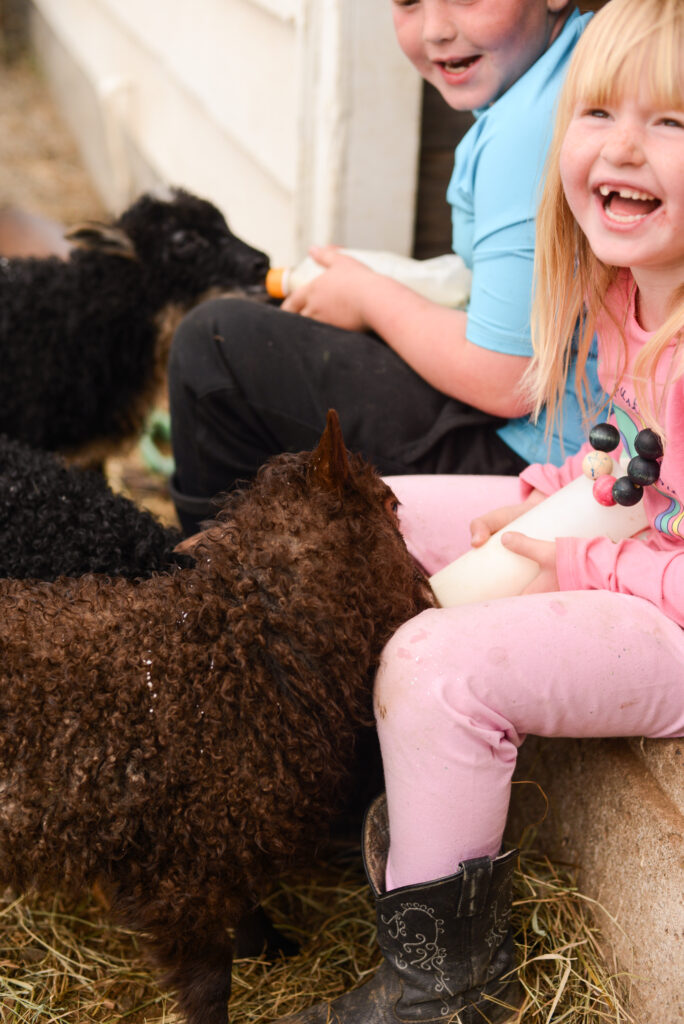
You’ve probably heard the term superfood before but you may not have associated it with colostrum, what I consider to be the ultimate superfood. Now that our 2023 calving, kidding and lambing seasons have come to an end I wanted to share more about how colostrum plays a vital role in most of our livestock’s first few hours of life.
What Is Colostrum?

By definition, colostrum is the first milk produced after birth by mammals (including humans!) and it contains an abundance of nutrients and antibodies to provide vital immune support and protect against diseases. Newborns nurse on colostrum first thing after birth which then arms them with that protection. Colostrum is also extremely rich, which helps them stay warm.
Because our dairy mothers typically produce an abundance of colostrum and colostrum is considered “universal,” it can also be saved, stored and used for bottle feeding and emergencies across species, which is exactly what we do with colostrum we milk from our dairy cows.
How Colostrum Is Used

After one of our dairy cows calve and we ensure that the calf gets what they need, we will typically save at least a gallon of their colostrum in one cup cubes and put it in the freezer for future use.
Having that colostrum on hand is extremely helpful, especially when it comes to lambing. Every season we end up with a handful or so of what we call bottle babies. These lambs are unable to nurse from their mothers for a variety of reasons but most commonly because she doesn’t have enough milk to go around, her udder is damaged or non-productive, or she’s a first time mother and rejects the lamb at birth due to inexperience. In all these cases we give them colostrum in a bottle to suckle from as quickly as possible so that they don’t miss out on those important nutrients and can develop normally. As cute as bottle babies can be, we aim for as few of them as possible each year so that they can nurse from their mothers as expected and get their nutritional benefits directly.
Other times we’ve used colostrum for tube feeding. When a lamb, kid or calf has a difficult birth and is left weak, chilled or unable to suckle on a bottle, we insert what’s called an esophageal or stomach tube to give them a direct line to the colostrum and the necessary nutrients they need. A reserve of colostrum is an important part of our livestock birthing kit and has come in handy more times than I can count. Colostrum replacements are available too in a pinch and usually come in a powder form however I much prefer the real thing if I’ve got it.
This year, I was grateful to collect another gallon from Tilly, our guernsey dairy cow and Olive, our Toggenburg dairy goat. We have quite the stash built up. Last years colostrum? Lets just say, it makes GREAT lattes and the most delicious yogurt you will ever enjoy! When Petunia calves, I’m really excited to try making kefir with it!
Let me know in the comments if you’ve ever tried colostrum!
Thank you for your rich informative account of what’s going on at Widnor Farms! Its a treasury of memories for me and my grandchildren. I hope we can continue to attend your most informative farm school classes. Your Mothers day meal looks like a wonderful way to stay in touch. I know Mara asked for a little lamb, but we don’t have enough experience to know how we could make an environment that would suit its needs. I wonder if she could have an experience in bottle feeding a little one? You did say there was a third lamb born after we attended your class . I know she would love the opportunity to do that. Could that be arranged? Thank you, Briana. (And my website is in a slow process of revision, but it should be improved sometime in June and I would love to add a link to your farm)
I have gotten colostrum a couple times; I am an advocate of raw milk/cheese, etc. I am always looking for it as I travel across the country.
Do you sell the colostrum?
We do not. As much as I wish we could, its not something we can provide. 🙂